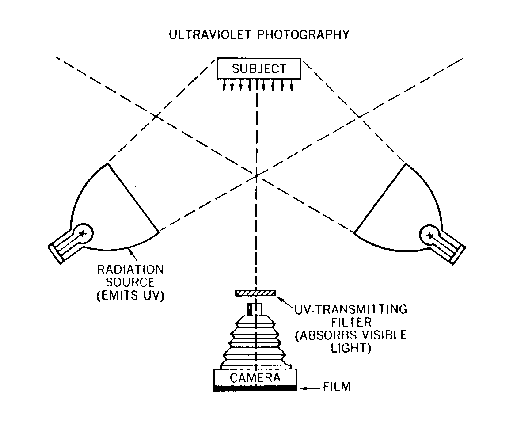Ultraviolet Photography
Some materials will absorb ultraviolet, while others will reflect these radiations. Some have partial reflection. These effects can be recorded photographically suing ultraviolet radiation. Black-and-white films are sensitive to most wavelengths of ultraviolet. By using a filter that absorbs all visible light but passes ultraviolet, it is possible to make a photographic exposure with just ultraviolet.
Receive our free monthly newsletter and/or job posting alerts Click to sign up
Uses in Law Enforcement
- Try ultraviolet photography after visible light techniques and infrared light techniques fail (questioned documents, etc.).
- Fingerprints on multicolored surfaces (dust with fluorescent powder or ninhydrin).
- Body secretions such as urine, semen and perspiration often glow when illuminated by ultraviolet light.
- Money and other valuables can be dusted or marked to identify thiefs.
Equipment, Films and Filters
- Camera and lens with a Kodak Wratten filter #18A.
- Other light sources include mercury vapor lamps and wire-filled flash lamps.
Focusing and Exposure
- Focus for visible light and then shoot for maximum depth of field to get the correct focus.
- Accurate focus and exposure for ultraviolet photography requires test exposure.
- The ISO of film will be much different for ultraviolet photography. A film with a speed of ISO 400 for visible light may have an effective speed of ISO 10 for ultraviolet photography. Bracket your exposures.
Photographic Necessities for Reflected Ultraviolet Radiation
- Illuminate the subject by means of a radiation source that emits ultraviolet.
- Exclude all visible light from the camera by placing over the lens a filter that transmits only ultraviolet.
- Record the image in the camera on the film.


